Mangalorean cuisine, from coastal Karnataka, offers a rich blend of flavors influenced by South Indian and Portuguese traditions. Known for its spicy seafood curries and coconut-based dishes, it delights with dishes like Chicken Ghee Roast and Neer Dosa. With staples like coconut and aromatic spices, it offers a delicious mix of spicy, tangy, and savory flavors, making it a favorite among food lovers.
Neer Dosa

Neer Dosa, a cherished delicacy in Mangalorean cuisine, stands out for its delicate texture resembling lace. Derived from the Kannada term "Neer" meaning "water," it aptly describes the batter's thin consistency. Made from soaked rice, coconut, and a pinch of salt, the batter requires no fermentation, being simply mixed with water to achieve a buttermilk-like texture. Ladled onto a hot griddle, it cooks swiftly, needing no flipping. Once the edges curl and the surface cooks, Neer Dosas are ready to serve. Typically enjoyed with coconut chutney, sambar, or spicy curry, they offer a light, refreshing option for breakfast or snacks, particularly refreshing during hot summers. Neer Dosas epitomize simplicity and delight, representing a culinary gem of South Indian cuisine.
Sanna
-1711470046.jpg)
Sanna, a traditional delicacy of Mangalorean cuisine, hails from the coastal realms of Karnataka, India. This soft and airy steamed rice cake is a popular choice for breakfast or snack time. To prepare Sanna, rice and urad dal (black lentils) are soaked, then ground into a smooth batter. Left to ferment overnight, this batter develops rich flavors and a delightful texture. It's then poured into molds or idli plates and steamed until fully cooked. The resulting Sanna boasts a light, spongy texture with a subtle tanginess. Typically served with an array of accompaniments like coconut chutney or sambar, it also stands well alone as a satisfying snack, especially when accompanied by a steaming cup of tea or coffee.
Kori rotti
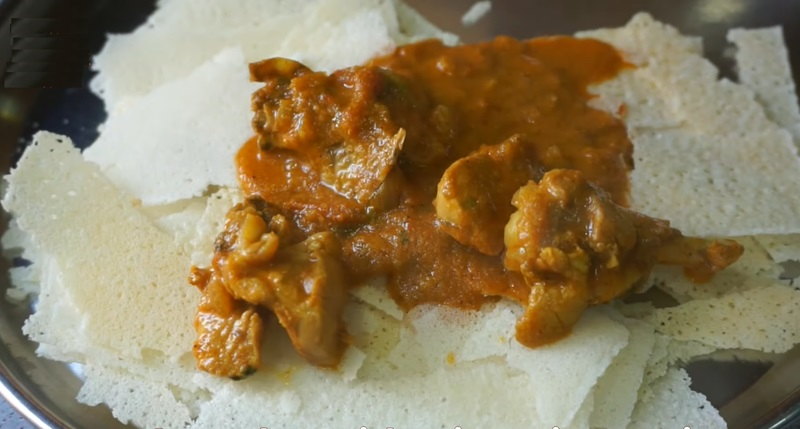
Mangalorean cuisine stands out for its vibrant flavors and harmonious spice blends, with Kori Rotti being a beloved staple. This traditional dish features tender chicken curry paired with crispy rice wafers known as rottis. The name "Kori Rotti" derives from the crispy rottis, crafted by soaking rice dough, grinding it thinly, and sun-drying it before frying to a golden crisp. The accompanying chicken curry is a symphony of spices—coriander, cumin, turmeric, and red chili—marinated with succulent chicken pieces, then cooked with onions, tomatoes, and creamy coconut milk. The result is a tantalizing interplay of textures and flavors, with the crunchy rottis complementing the rich, spicy curry. Kori Rotti is a cherished main course, often savored during festive gatherings and special occasions in Mangalorean households.
Kuswar
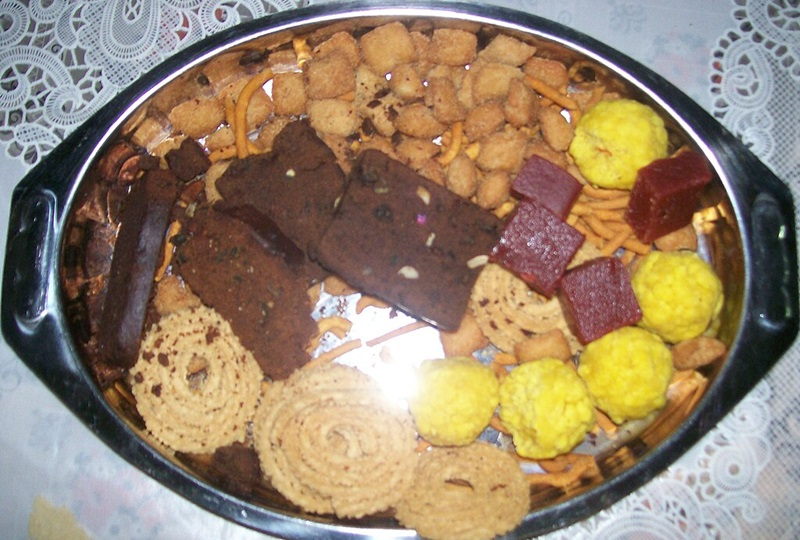
Kuswar holds a significant place in Mangalorean cuisine, also known as Konkani cuisine, as a cherished traditional sweet dish. This delightful assortment of sweets and savories is a staple during festive occasions, particularly Christmas, adding a festive flair to celebrations. Kuswar offers a tantalizing blend of flavors, textures, and aromas that captivate the palate. It features a variety of treats such as nevryo, kidiyo, marzipan, rose cookies, and kulkuls, each meticulously crafted using traditional recipes and cherished family techniques. The result is a symphony of unique tastes that have been passed down through generations. Beyond its deliciousness, Kuswar is a visual spectacle, boasting vibrant colors and intricate shapes. It symbolizes togetherness and joy, uniting families and friends in celebration during special times.
Mangalore Bajji
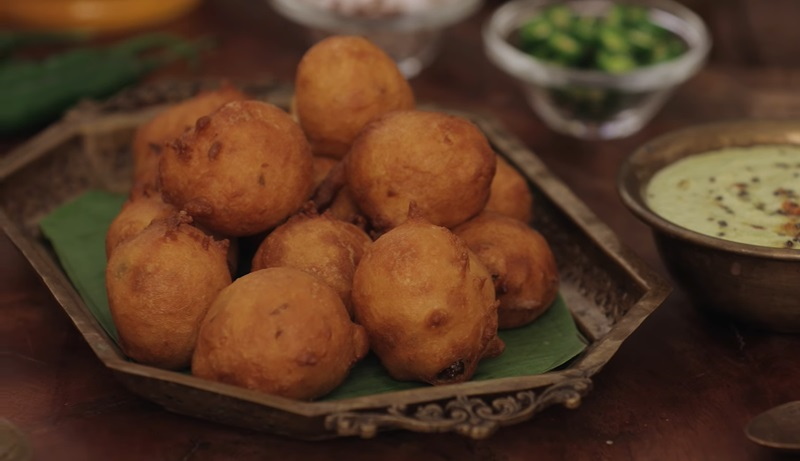
Mangalore Bajji is a beloved dish from Mangalorean cuisine, featuring a flavorful blend of ingredients. The main components include maida, chopped onion, curd, gram flour, green chilies, rice flour, jeera, coriander leaves, coconut, curry leaves, and salt. These ingredients are skillfully combined to create a firm batter, which is then shaped into small balls and deep-fried to perfection, ideally in fragrant coconut oil. Mangalore Bajji is commonly accompanied by chutney, enhancing its taste profile. This crispy and savory snack is a favorite among locals and visitors alike, appreciated for its rich flavors and crunchy texture. Mangalore Bajji exemplifies the culinary prowess of Mangalorean cuisine, offering a delightful treat for any occasion.
Pundi
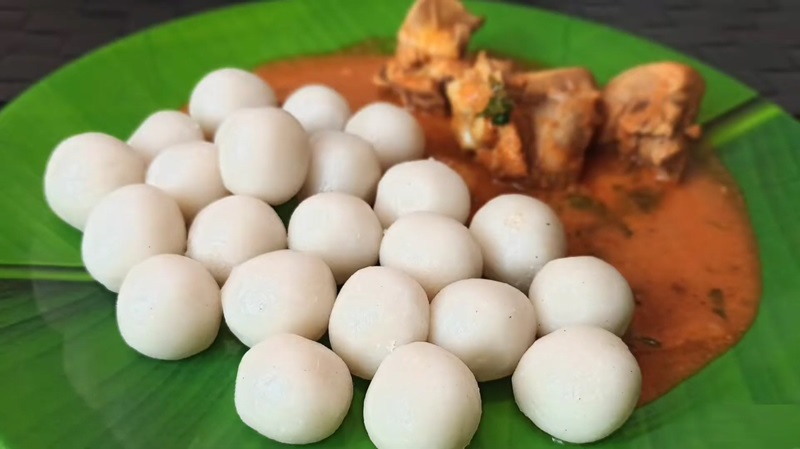
Pundi is a traditional dish from the coastal regions of Karnataka, India, particularly popular in Mangalorean cuisine. It is a type of steamed rice dumpling, typically made from rice flour and grated coconut. The rice flour and grated coconut are mixed together with salt and water to form a dough-like consistency. It is then shaped into small, round dumplings and steamed until cooked through. Pundi is often served with a variety of accompaniments such as sambar, chutney, or a spicy coconut-based gravy known as gassi. It is a wholesome and comforting dish, enjoyed as a breakfast item or as a snack. Pundi showcases the culinary traditions of the coastal regions, offering a delightful taste of Karnataka's rich gastronomic heritage.
Mangalorean Chicken Sukka

Mangalorean cuisine is a vibrant and flavorsome culinary tradition originating from the coastal city of Mangalore in Karnataka, India. One of its most beloved dishes is Mangalorean Chicken Sukka, a spicy and aromatic chicken dish that is sure to tantalize the taste buds. The star of this dish is the succulent chicken pieces, which are marinated in a blend of aromatic spices like coriander, cumin, turmeric, and red chili powder. The marinated chicken is then cooked to perfection in a mixture of coconut oil, onions, tomatoes, and a medley of spices, including cloves, cinnamon, and cardamom, which infuse the dish with a rich and robust flavor. What sets Mangalorean Chicken Sukka apart is its unique combination of spices and the use of freshly grated coconut, which adds a delightful sweetness and texture to the dish. The chicken is cooked until tender and the flavors have melded together, resulting in a mouthwatering and fragrant dish. Mangalorean Chicken Sukka is typically served with steamed rice or neer dosa, a thin and delicate rice crepe. The dish is a perfect blend of spice and flavor, making it a favorite among those who appreciate the bold and distinctive tastes of Mangalorean cuisine.
Mangalore Buns
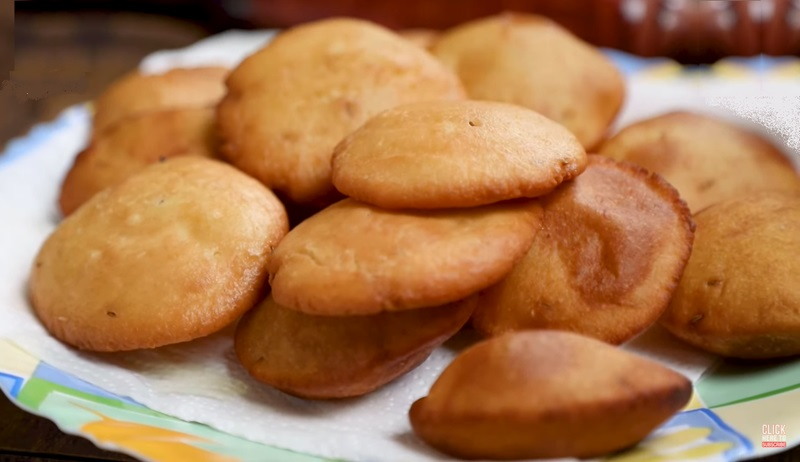
Originating from the Udupi-Mangalore region of Karnataka, India, Mangalore Buns are a delightful addition to Mangalorean cuisine. These deep-fried breads boast a mild sweetness and a soft, fluffy texture, thanks to the primary ingredients of all-purpose flour and ripe bananas. Often enjoyed with a side of sambar and spicy coconut chutney, they are equally delectable on their own. Some variations of this dish incorporate finger millet and sorghum for added depth of flavor and nutritional value. Mangalore Buns offer a perfect balance of sweetness and savory flavors, making them a beloved choice for breakfast or as a snack throughout the day. Their versatility and unique taste contribute to their popularity among locals and visitors alike in the coastal regions of Karnataka.
Chicken Ghee Roast
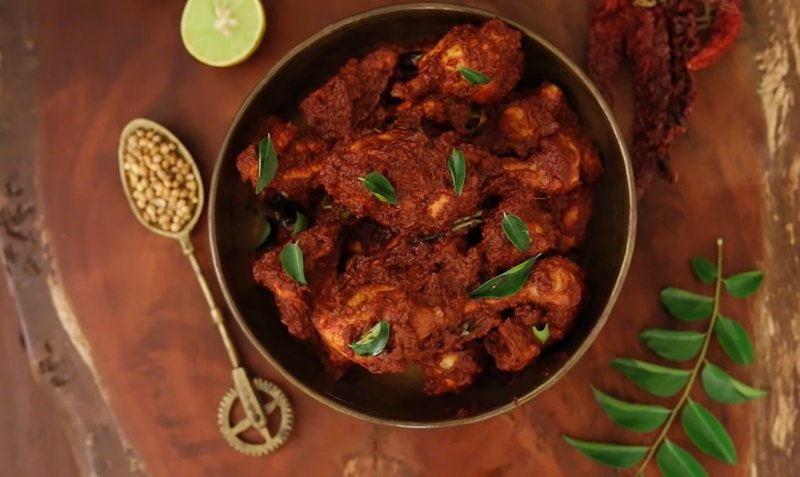
Mangalorean cuisine stands out for its distinctive fusion of flavors, exemplified by the renowned Chicken Ghee Roast. Originating from the coastal town of Kundapur, in Karnataka, India, this dish is a fiery and tangy delicacy cherished by locals and gastronomes alike. The preparation begins with marinating chicken pieces in a blend of spices including red chili powder, turmeric, ginger-garlic paste, and vinegar. Sautéed in generous ghee (clarified butter) with aromatic spices like cumin, fennel, and coriander seeds, the chicken is elevated with curry leaves, tamarind pulp, and jaggery for a harmonious balance of heat, tanginess, and sweetness. With robust flavors in every bite, the Chicken Ghee Roast is often accompanied by traditional Mangalorean staples such as Neer Dosa or steamed rice, enhancing its culinary allure.
Kidyo
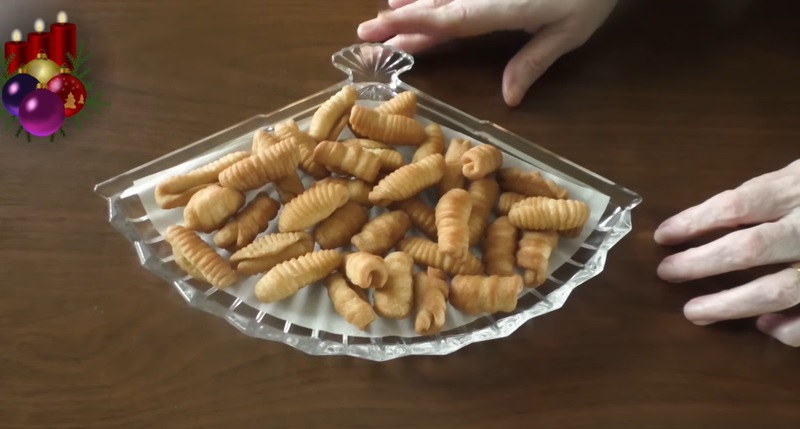
Kidyo, also referred to as Kulkuls, is a delightful sweet treat that forms a part of the festive delicacies known as Kuswar, traditionally prepared during the Christmas celebrations in Mangalore. Made primarily from maida flour, milk, and occasionally eggs, Kidyo is meticulously shaped into small shell-like forms before being fried to golden perfection in ghee or oil. This process gives them a crispy exterior while maintaining a soft and delectable interior. Kidyo holds a special place in the hearts of Mangaloreans during the holiday season, offering a delightful combination of sweetness and texture. Whether enjoyed as a standalone snack or as part of the festive spread, Kidyo adds a touch of joy and tradition to the Christmas festivities in Mangalore.
Bafat
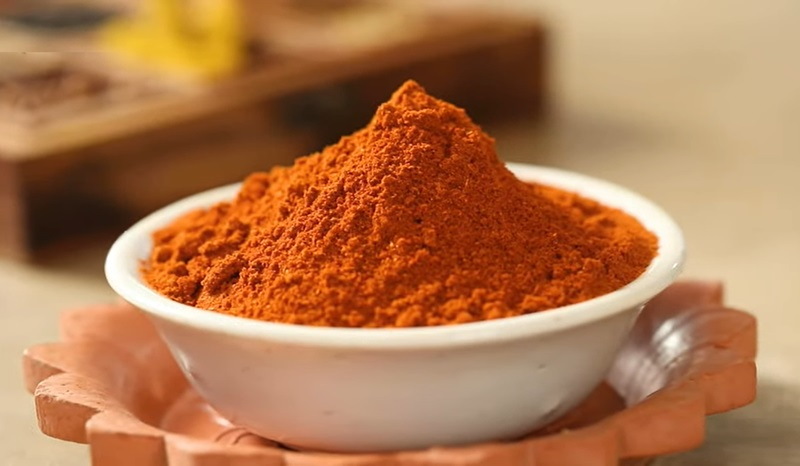
Bafat, also spelled as bafad or baffat, stands as a quintessential masala blend intrinsic to Mangalorean cuisine. This aromatic mixture is crafted from a combination of dried and ground ingredients such as turmeric, chili peppers, coriander seeds, black peppercorns, cumin seeds, mustard seeds, cinnamon, and cloves, showcasing influences from Portuguese and Goan culinary traditions. Most notably, Bafat finds its spotlight in a flavorful pork stew, known as bafat or "dukra maas," frequently accompanied by sanna. Beyond its role in pork dishes, Bafat serves as a versatile seasoning for a variety of meats and vegetables. Its distinct flavor profile and cultural significance make Bafat a cherished component of Mangalorean cuisine, enriching dishes with its vibrant and aromatic notes.
Mangalorean Bangude Masala
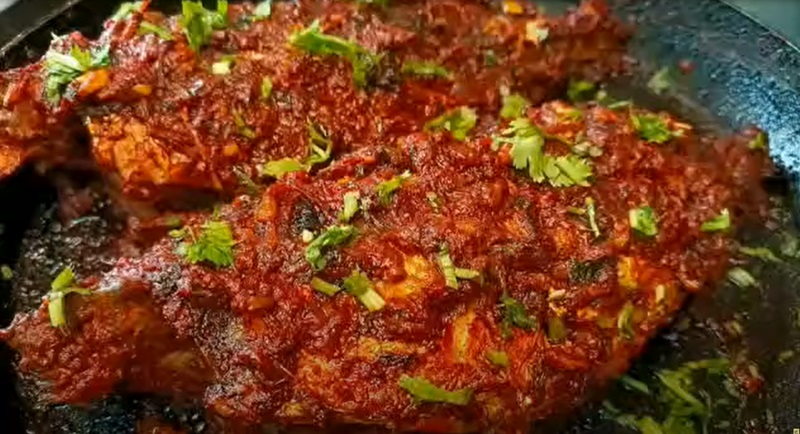
Mangalorean Bangude Masala is a traditional fish curry dish originating from the coastal regions of Mangalore, Karnataka, India. It features mackerel (known as bangude in the local language) cooked in a rich and flavorful masala gravy. The masala blend typically includes a variety of spices such as coriander, cumin, turmeric, red chili, and tamarind, along with aromatic ingredients like garlic, ginger, and curry leaves. The fish is marinated in this spice mixture to infuse it with flavor before being simmered gently in a tangy and spicy gravy. Mangalorean Bangude Masala is known for its bold and vibrant taste, with a perfect balance of heat, tanginess, and aromatic spices. It is often served with steamed rice or traditional breads like neer dosa or roti, making it a favorite among seafood lovers in the region.
Oondees
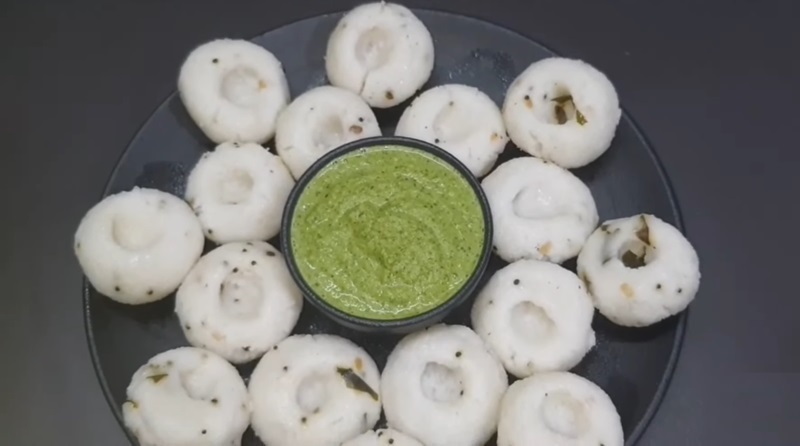
Oondees, also known as undees, stand as a cherished breakfast treat originating from the Mangalore region of India. These spherical delights are crafted from semolina or rice, offering a semi-soft texture that melts in the mouth. Variants may include a touch of sweetness through sugar or coconut. Traditionally, Oondees were prepared by soaking and flattening rice through pounding, but modern recipes utilize ready-made idli rava. The preparation involves boiling semolina (rava) with coconut, sugar, salt, and traditional spices until it reaches a semi-hard consistency. The mixture is then shaped into spheres approximately four inches in diameter and steamed to perfection. Oondees tantalize the taste buds with their unique blend of flavors and textures, making them a beloved choice for breakfast in Mangalorean households.
Dosa
-1713787463.jpg)
Dosa is a popular South Indian crepe made from fermented rice and lentil batter. It is a versatile dish enjoyed not just in Mangalore but all across India, known for its crispy texture and delightful flavor. The batter is typically made by soaking rice and lentils, such as urad dal, grinding them into a smooth paste, and fermenting the mixture overnight. This fermentation process gives dosa its characteristic tangy flavor and airy texture. The batter is then spread thinly on a hot griddle or tava and cooked until golden brown and crispy. Dosa can be served plain or filled with a variety of savory fillings, such as spiced potatoes or paneer. It is commonly accompanied by chutneys and sambar, a lentil-based vegetable stew, making it a satisfying and delicious meal enjoyed for breakfast, lunch, or dinner.





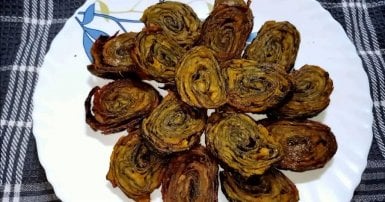
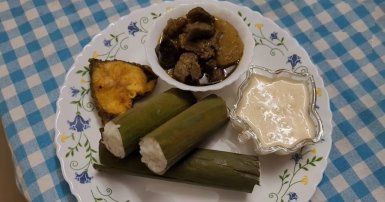
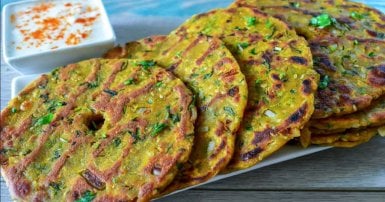
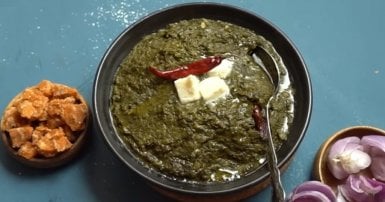
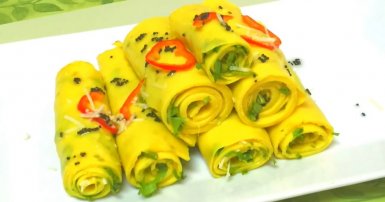
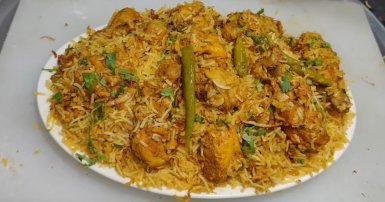
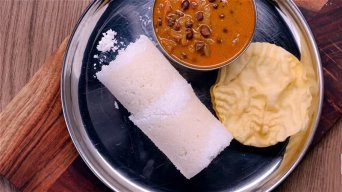

-1709813013.jpg)


